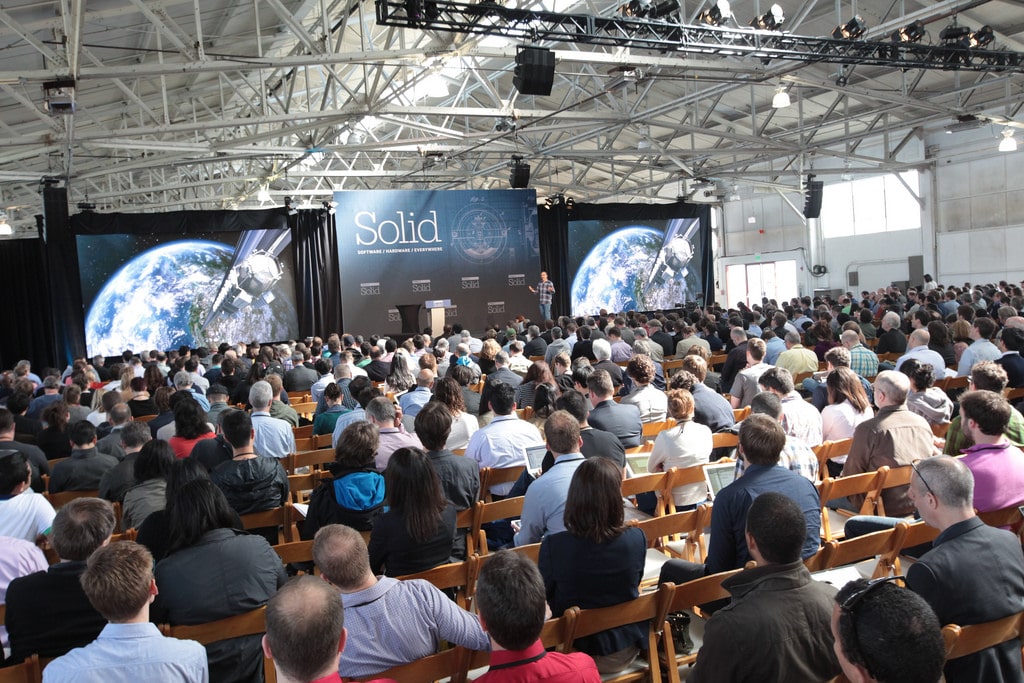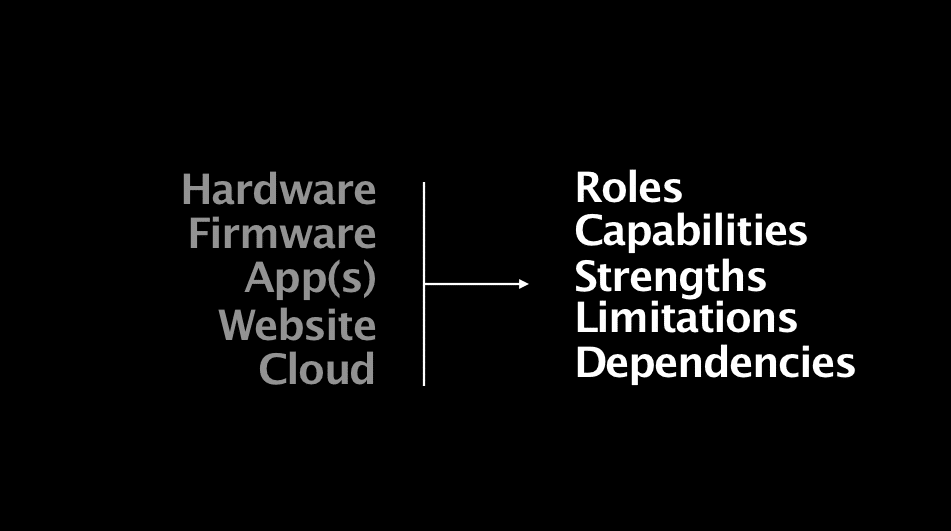
Source: O’Reilly Conferences
I recently returned from the inaugural O’Reily Solid, a conference focused on the intersection of software and hardware. It was a fascinating event — I can think of few other places where you could find dancing robots, modular circuit boards, smart power tools, and airborne wind turbines under the same roof as such diverse and revolutionary talks as designing interactions between connected devices, collaborative UX for the internet of things, and the future of fabrication.
Needless to say, I had a great time and learned a lot. With this post, I would like to share, in no particular order, some of my main observations and takeaways from this conference.
1. Your product is only as good as each of its parts and the connections between them.
In systems that allow users to interact with devices across multiple platforms, continuity in experience and fluidity in connection are often defining features of a product’s success, and they are also the greatest points of risk. Many speakers underscored how important it is for product teams to pay great attention the design and functionality of the touchpoints and transitions between technologies in a platform, making sure that they are as seamless as possible, and that failure cases are extensively tested and designed.

Source: Laura’s slides
In her talk Designing Cohesively Across Product Components, Experience Design Director Laura Von Dehsen shared her belief that it’s important for designers to have at least a basic functional understanding of the basic technologies that make up a product platform, and the capabilities and weaknesses of each platform.
Having this knowledge, she says, helps designers understand, together with developers, where to assign functionality and where potential points of failure are. For example, don’t perform complex data analysis onboard an embedded device, because the limited capabilities of the device will result in a poor user experience. Have the device send the data to the cloud or a smartphone, and perform the analysis there.
2. Connected Devices have broad sociological implications.
There were many talks that focused around, or at least touched on, the sociological implications of devices, our relationships with them, and the way they affect our interaction as human beings. Some key concepts I noticed:
Designing for Passive Interaction
Most “smart” products are meant to automate processes and make peoples’ lives easier. One factor in the success and continued use of these products is how well they are able to do their job with little to no user interaction.
Designers of these things need to keep in mind the concept of “passive interaction” — the device is in the background, doing its job for me, and I don’t have to engage it. For designers who are used to encouraging engagement, this could be quite a paradigm shift. In his talk, “Memoirs of an Object”, Simone Rebaudengo of frogdesign shared a design experiment where he and his team took this idea of the “needy device” to an absurd level, exploring the limits of smart device behavior and user engagement.
Social Weight
In his talk “Bringing to Life Wearable Ideas and Rapid Prototyping using Aruduino”, Moe Tanabian from Samsung Mobile brought up the important idea of Social Weight. Social weight can be described as a combination of three things:
- cognitive load
- physical presence
- social convention
In designing devices, especially wearables, pay careful consideration the degree that each of these factors is present in the product. If you ignore them, you’re risking another Google Glass barfight situation.
Security
As more and more of the objects around us are gathering data about us and and connecting to the internet to share and analyze that data, the security implications are immense. Paul Fremantle from WSO2 shared examples of how easily Things can be hacked, talked about why we should care, spoke about basic steps IoT designers and developers should take to secure the devices they make, and broader steps that the industry needs to take in order to ensure that user data stays safe and private.
3. Making things is hard
…but it’s getting easier.
In his talk “G28 Machine UX, You’re Drunk”, Mike Estee from Other Machine Co shared some of the difficulties involved in bringing a Thing from Industrial Design all the way through Machining, and talked about some of the advances in software tools that are beginning to alleviate some of these pains.
Carl Bass, the CEO of AutoDesk, gave a keynote about “The Future of How Things are Made”, in which he touched on advances in 3D printing, how combining additive and subtractive manufacturing processes will change machining, and the mind-blowing ways in which cloud computing is changing 3D design. (Check out the video — it’s a great talk.)
Entrepreneurs looking to validate a product concept should look to Hardi Maybaum and his company GrabCad. Hardi’s talk “The Hardware Renaissance and How Anyone Can Get a Product Concept Manufactured” is full of valuable information about ways to streamline the industrial design and manufacturing process for fledgling products.
Looking Forward to Next Year… and Beyond
The inaugural O’Reilly Solid Conference was a fantastic conference experience, and one that should be on everybody’s radar for next year. The intersection of software and hardware is rich with opportunities in every space — business, manufacturing, consumer products, and social good. For me, the conference was a great survey of what’s out there right now, and a preview of great things on the horizon in our industry and our world.
